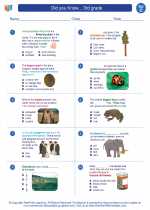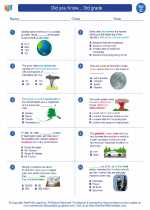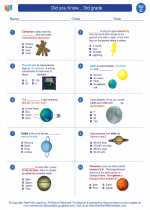Neptune: The Mysterious Blue Planet
Neptune is the eighth and farthest planet from the Sun in our solar system. It is a gas giant, similar to Uranus, and is often referred to as an "ice giant" due to its composition of water, ammonia, and methane ices in its atmosphere.
Characteristics of Neptune:
- Size: Neptune is about 17 times the mass of Earth and is the fourth-largest planet by diameter.
- Color: Its vivid blue color is the result of the absorption of red light by methane in its atmosphere.
- Atmosphere: The atmosphere of Neptune consists of hydrogen, helium, methane, and trace amounts of other hydrocarbons.
- Weather: Neptune has the strongest winds in the solar system, with speeds reaching up to 1,300 miles per hour (2,100 kilometers per hour).
- Moons: Neptune has 14 known moons, with Triton being the largest and most famous one. Triton is unique as it orbits Neptune in the opposite direction of the planet's rotation, suggesting that it may have been captured by Neptune's gravity.
- Rings: Neptune has faint and narrow rings, which are composed of dust particles and are difficult to observe from Earth.
Interesting Facts about Neptune:
- Neptune was not known to ancient civilizations due to its dimness and slow orbit, and was first observed by modern astronomers in 1846.
- It takes Neptune about 165 Earth years to complete one orbit around the Sun.
- Neptune's internal structure is likely composed of a rocky core surrounded by a layer of icy materials and a thick atmosphere of gas.
- The Voyager 2 spacecraft is the only spacecraft to have visited Neptune, passing by the planet in 1989 and providing valuable data and images of the planet and its moons.
Study Guide Questions:
- What gives Neptune its blue color?
- How does Neptune's atmosphere differ from Earth's?
- What is the most famous moon of Neptune, and what makes it unique?
- Why was Neptune not known to ancient civilizations?
- What spacecraft visited Neptune, and what did it discover?
[Neptune] Related Worksheets and Study Guides:
.◂Science Worksheets and Study Guides Third Grade. Did you Know... 3rd grade
Study Guide Did you Know... 3rd grade
Did you Know... 3rd grade  Worksheet/Answer key
Worksheet/Answer key Did you Know... 3rd grade
Did you Know... 3rd grade  Worksheet/Answer key
Worksheet/Answer key Did you Know... 3rd grade
Did you Know... 3rd grade  Worksheet/Answer key
Worksheet/Answer key Did you Know... 3rd grade
Did you Know... 3rd grade 

 Worksheet/Answer key
Worksheet/Answer key
 Worksheet/Answer key
Worksheet/Answer key
 Worksheet/Answer key
Worksheet/Answer key

The resources above cover the following skills:
LIFE SCIENCE
Unity and Diversity
Construct an argument from evidence to explain the likelihood of an organism’s ability to survive when compared to the resources in a certain habitat (e.g., freshwater organisms survive well, less well, or not at all in saltwater; desert organisms survive well, less well, or not at all in woodlands).
Create models that illustrate how organisms and their habitats make up a system in which the parts depend on each other.